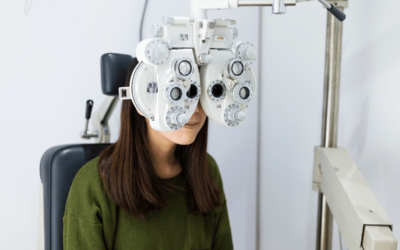Fall has arrived! As the leaves change colors and the days get shorter, many of us are excited to bring out our cozy sweaters and drink fresh apple cider. However, for those with vision issues, it can be challenging to adjust to changing light conditions.
If you’re someone who struggles with their eyesight, you’re not alone. Whether you have astigmatism or nearsightedness, it can be difficult to adapt to the changing seasons. In this blog post, we’ll share some tips to help you adjust this autumn, so you can enjoy everything the season has to offer.
Understanding the impact of changing light conditions
As summer turns into fall, it brings with it shorter days, longer nights, and a shift in the quality and intensity of natural light. These changes can affect our eyes in many ways, including:
1. Glare: Sun glare is more likely to be an issue during the fall months when the sun is closer to the horizon. With the sun lower in the sky, it’s easier to get blinded by the light during your morning or evening work commute. Glare can cause discomfort, reduce visibility, and strain the eyes.
2. Contrast: Fall foliage and changing landscapes can be a stunning sight, but they can also make it difficult to see clearly. Our eyes have to work harder to adjust to the different levels of light and shade, especially if you have vision problems.
Tips for adjusting to changing light conditions
To keep your eyes healthy and comfortable during the fall season, here are some tips you can consider:
1. Wear the right eyewear: If you spend a lot of time driving or outdoors during the fall season, you can avoid glare by wearing sunglasses with polarized lenses. Polarized lenses reduce glare caused by light reflecting off surfaces and protect your eyes from sun damage as well. By reducing glare, they can help give you clearer vision and relieve eye strain.
2. Schedule regular eye exams: Keeping up with eye exams is critical for monitoring your eye health and detecting any vision changes. During these exams, your eye doctor can detect early signs of eye conditions such as glaucoma, cataracts, and retinal disorders. These conditions may have little or no symptoms, leading to further problems if not detected early.
3. Adjust indoor lighting: As the days start getting shorter, it’s important to adjust the lighting in your home or workspace. Having good indoor lighting can help reduce eye strain and improve visibility. You might want to try using adjustable lamps or task lighting to create a cozy and well-lit space.
4. Take breaks from digital screens: We spend more time indoors during fall, which leads to an increase in screen time. However, too much screen time can strain our eyes. Remember to take regular breaks, practice the 20-20-20 rule (looking at something 20 feet away for 20 seconds every 20 minutes), and adjust the screen brightness to avoid eye fatigue.
As we enjoy the beauty and charm of the fall season, it’s crucial to take care of our eyes. Don’t forget to schedule regular eye exams, wear the right eyewear, and make adjustments to lighting and screen time. These steps make a difference in keeping our eyes healthy during the fall months.
We hope you have a wonderful fall season! If you have any concerns about your eye health, give us a call today in Plymouth, MI to schedule your eye exam.





